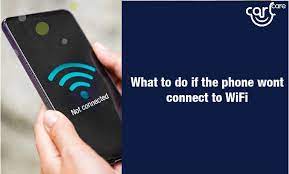And this is exactly why there’s no one-size-fits-all solution. We’ll walk you through some possible answers, but know that the farther you scroll on this page, the more likely it is that your problem requires a professional fix or a call to your internet service provider.
You swear you’re typing the password correctly and you’re about to smash the router against the wall when you realize you had the caps lock on. As obvious as this may sound, unexpectedly incorrect login details is a common cause of WiFi struggles. Taking a breath and checking the accuracy of your credentials can save you many frustrating minutes of typing and retyping a wrong password.
First, make sure you’re reading every character correctly—this is especially important when someone shares a password with you on a handwritten note. When you’re typing, tap or click on the eye icon to the right of the password field to see what you’re typing in real time. Most interfaces have this feature, but you should avoid it if you’re in a crowded, public space, as someone may be peeking over your shoulder.
Second, remember credentials are case sensitive, so alternate between upper- and lowercase diligently.
Third, be aware of your keyboard. Start by checking your caps lock is off—most laptops and mechanical keyboards will turn a light on to notify you of this potential problem. If yours doesn’t, look for prompts on the screen or check by typing something in a visible field (like an address bar).
If you use your keyboard to type with more than one alphabet, make sure it’s set to your default, as you might be hitting the wrong keys without even knowing it.
WiFi coverage may vary for a lot of different reasons—from how strong of a signal the router is emitting, to the thickness of your home’s walls. It doesn’t help if, in an attempt to disguise its unaesthetic nature, the router’s owner placed the gadget in a deep corner or covered it with books or other trinkets.
Moving closer to the router and making sure its antennae are up and unobstructed can help you get a connection more easily.
Again, it might sound obvious, but any gadget you’re connecting to a WiFi network has to actively seek that connection. This will only happen when its WiFi mode is on.
If you have an iPhone or iPad, you’ll want to access the Control Center menu—open it by swiping down from the upper right corner of your screen. There, tap the WiFi icon (it looks like three curved waves stacked on top of each other) to turn it on. On Mac computers, you’ll find the same icon to the left of the clock, in the upper right corner of your screen. On Android phones and tablets, you can swipe down with two fingers from the top of your screen. Depending on the make of your device, you’ll see a three-wave WiFi icon, or you’ll see an option called Internet. Tap on it and turn on the toggle switch next to WiFi. On a PC, you’ll see a tilted three-wave WiFi icon when you click on the upward arrow next to the clock in the bottom right corner of your screen. Click on it to turn it on.
Source : https://www.popsci.com/diy/device-wont-connect-to-wifi/








